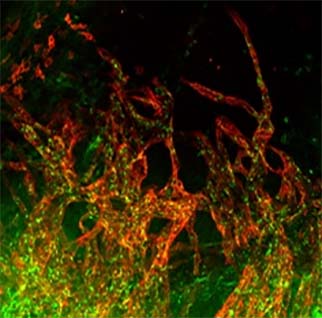
Researchers funded by the British Heart Foundation have identified how a new treatment in mice can regenerate the heart after a myocardial infarction—preventing the onset of heart failure. A team from the University of Oxford found that injecting the protein VEGF-C after myocardial infarction in mice significantly reduced the amount of damaged heart muscle, allowing the heart to recover almost all of its pumping function. In comparison, untreated mice lost almost half of their heart function after a myocardial infarction.
The VEGF-C treatment promoted growth of a network of vessels which are part of the lymphatic system. The research team from the University of Oxford, led by Paul Riley, have now discovered that the extra lymphatic vessels allow the immune cells to be quickly cleared after helping to repair and clear dying and dead cells, but before they can cause significant damage from inflammation. This treatment led to better healing in the heart and better recovery of the heart’s pumping function after a myocardial infarction.
When the heart’s ability to use the lymphatic system to clear away the immune cells was hampered, more scarring developed, the muscle could not pump as well, and the whole heart started to change shape in response to the damage. The research team also think that by clearing away macrophages, the first line of immune cells that start the healing process, other immune cells called Tregs could then be allowed into the injured muscle, to further help the heart to repair and recover.
Future research and treatments will focus on achieving the best balance of immune cells after a heart attack to ensure initial heart repair doesn’t escalate to inflammation, scarring and heart failure. The findings were published in the Journal of Clinical Investigation.
Riley, who leads the BHF Centre of Regenerative Medicine in Oxford and Cambridge (UK), says: “We started looking at the lymphatic system in the heart a few years ago—we could never have known how pivotal it might turn out to be for heart repair.
“We now know that it is not enough to just get healing immune cells into the heart. We need to boost the routes that remove these immune cells once they have done their job, so that they do not start causing more harm and ultimately contribute to the long-term damage that leads to heart failure.
“This research has allowed us to start a drug discovery programme to develop drugs to promote the growth of lymphatic vessels and quickly clear immune cells. We hope to get a treatment we could give to people after a heart attack within five to 10 years.”












